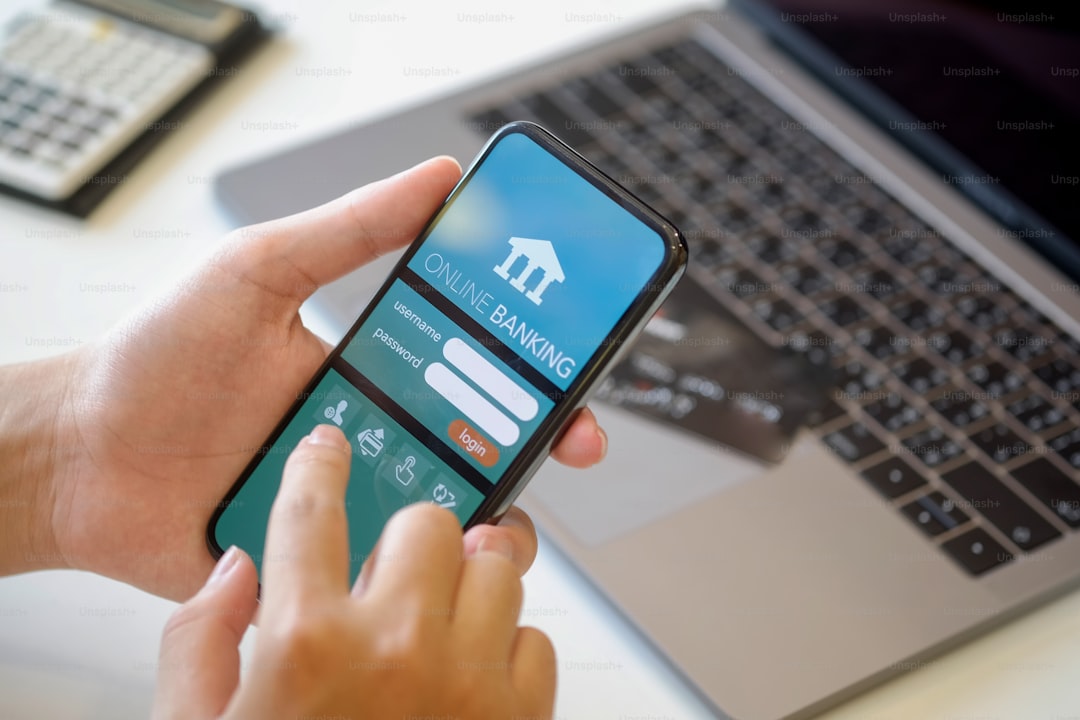Essential Banking Solutions Every Digital Nomad Needs

Introduction
The digital nomad lifestyle is built on flexibility, mobility and the ability to work from anywhere with an internet connection. Money, however, does not move as freely as data. A nomad needs banking solutions that keep funds accessible, secure, inexpensive and compliant with tax and legal obligations across multiple jurisdictions. This article breaks down the essential banking tools every digital nomad should have in their financial toolbox, explains why each is important, and offers practical steps for setting them up. It also explores how cryptocurrency fits into a nomadic financial strategy and highlights common pitfalls to avoid.
Core Banking Requirements
Before diving into specific products, it helps to clarify the four core requirements that any good nomad‑friendly banking setup must satisfy:
- Global accessibility – the ability to log in, transfer funds and view balances from any country without triggering security blocks.
- Low fees – minimal costs for account maintenance, foreign‑currency conversion, ATM withdrawals and international transfers.
- Multi‑currency support – the capacity to hold, receive and spend money in several major currencies without needing a separate account for each.
- Regulatory compliance – tools that make it easy to meet tax reporting obligations, keep records for audits and stay within the legal framework of both the home country and the countries visited.
When a banking solution meets all four criteria, the nomad can focus on work and travel rather than chasing down lost funds or fighting with customer service.
Selecting an International Bank
Traditional banks often struggle to serve a highly mobile clientele. They may flag logins from foreign IP addresses, impose high fees for cross‑border transactions, or require a permanent residential address. An international bank designed for travelers can eliminate many of these obstacles.
What to Look For
- Online‑only onboarding – the ability to open an account entirely through a mobile app or web portal, using a passport, proof of address (or a virtual address service) and a selfie for verification.
- No minimum balance – many international banks charge a monthly fee if the account falls below a set threshold. Choose a provider that waives such fees or offers a tier that suits low‑balance users.
- Free or cheap ATM withdrawals – look for a network of fee‑free ATMs or a generous monthly allowance before a surcharge applies.
- Transparent currency conversion rates – providers that use the interbank rate or a clearly disclosed markup are preferable to those that add hidden spreads.
- Robust security features – biometric login, device authorization, and the ability to instantly freeze the card from within the app.
Recommended Providers
- Wise (formerly TransferWise) – offers a “borderless” account that provides local bank details in the US, UK, EU, Australia and New Zealand. Users can hold and convert over 50 currencies at the real exchange rate, withdraw from ATMs worldwide and send money internationally with low fees.
- Revolut – a fintech platform that combines a multi‑currency account, a prepaid debit card and a suite of budgeting tools. The premium plan includes free ATM withdrawals up to a set limit and travel insurance.
- N26 – a German‑based challenger bank with a fully digital onboarding process, free worldwide ATM withdrawals for premium users, and a strong focus on security.
- HSBC International – a more traditional option that provides an international account with multiple currency sub‑accounts, a global ATM network and dedicated relationship managers for high‑net‑worth travelers.
Each of these providers has a different fee structure, so it is worth comparing the cost of typical activities (e.g., three ATM withdrawals per week, monthly salary deposits, occasional international transfers) before committing.
Multi‑Currency Accounts
Holding several currencies in a single account eliminates the need to constantly exchange money at local banks or currency exchange kiosks, which often charge poor rates. Multi‑currency accounts also simplify tax reporting because all transactions are recorded in a single ledger.
How They Work
When you open a multi‑currency account, the provider creates virtual “sub‑accounts” for each supported currency. You can receive a local bank transfer in that currency (for example, a Euro SEPA transfer) and the funds appear instantly in the Euro sub‑account. You can then spend the money directly with a linked debit card, convert it to another currency within the app, or transfer it to another person’s account.
Practical Tips
- Keep a base currency – choose a primary currency that matches your main source of income (often USD or EUR). This reduces the number of conversions you need to make.
- Load ahead of travel – before heading to a country with a weak local currency, convert a portion of your funds to the destination’s currency while the exchange rate is favorable.
- Set automatic conversion limits – many platforms let you define a threshold at which the app will automatically convert excess balance into a chosen currency. This prevents idle money from sitting in low‑interest accounts.
Debit and Credit Cards for Travelers
A reliable debit card is essential for everyday purchases, while a credit card offers protection, rewards and a safety net for emergencies. However, not all cards are created equal for a nomadic lifestyle.
Debit Card Essentials
- Zero foreign transaction fees – the card should not add a 1–3 % surcharge on each purchase made abroad.
- Worldwide ATM network – access to ATMs that dispense the local currency without extra fees.
- Contactless payments – many countries have moved to tap‑to‑pay systems; a card with NFC support speeds up transactions.
Credit Card Essentials
- No annual fee – a fee‑free card reduces the cost of holding a card you may not use frequently.
- Travel rewards – points or miles that can be redeemed for flights, hotels or statement credits.
- Purchase protection and travel insurance – coverage for lost luggage, trip cancellations, and rental car damage is valuable for a nomad who frequently books short‑term stays.
Choosing the Right Pair
A common combination is a debit card from a multi‑currency account (e.g., Wise or Revolut) paired with a travel‑focused credit card from a major issuer (e.g., Chase Sapphire Preferred, American Express Gold). The debit card handles day‑to‑day spending with low fees, while the credit card covers larger purchases and offers rewards.
Managing Card Security
- Enable instant card freeze – most apps allow you to freeze a card with a single tap if it is lost or stolen.
- Register for travel alerts – some banks still require you to inform them of travel plans to avoid fraud blocks.
- Keep a backup card – store a second card in a separate location (e.g., a hidden pouch) in case the primary card is compromised.
International Money Transfer Tools
Even with a robust multi‑currency account, there will be times when you need to send money to family, pay a freelancer, or move funds between personal accounts. Traditional wire transfers are slow and expensive. Modern alternatives provide speed and transparency.
Top Transfer Services
- Wise – low‑cost transfers that use the real exchange rate and usually arrive within a day.
- Remitly – focused on sending money to emerging markets with cash‑pickup options.
- PayPal/Xoom – convenient for recipients who already have a PayPal balance, though fees can be higher for currency conversion.
- Revolut – free transfers between Revolut users and low‑cost international transfers for premium members.
Best Practices
- Batch payments – combine multiple small payments into a single larger transfer to reduce per‑transaction fees.
- Check transfer limits – some services impose daily or monthly caps, which may affect freelancers receiving regular income.
- Keep records – export transaction histories in CSV or PDF format for tax reporting.
Managing Taxes as a Digital Nomad
A nomadic lifestyle often blurs the lines of tax residency. Having the right banking setup can simplify tax compliance and reduce the risk of double taxation.
Determine Your Tax Residency
- Physical presence test – many countries consider you a tax resident if you spend more than 183 days in a calendar year within their borders.
- Center of vital interests – if your primary economic ties (e.g., family, business, property) are in a particular country, you may be deemed a resident there even if you spend less time physically present.
- Treaty benefits – some nations have tax treaties that prevent double taxation. Understanding which treaties apply to you can guide where you should file returns.
Banking Features That Help
- Consolidated statements – providers that offer a single monthly statement covering all currency balances make it easier to calculate total worldwide income.
- Exportable transaction data – CSV files can be imported into tax software such as TurboTax, TaxAct, or locally relevant platforms.
- Automatic tax‑reporting tools – certain fintech apps integrate with services like Stripe Tax or provide pre‑filled forms for common jurisdictions.
Practical Tips
- Separate personal and business finances – open a dedicated business account (often possible with the same provider) to keep income and expenses clearly delineated.
- Maintain a “home base” address – many banks require an address for compliance. Use a virtual mailbox service that forwards mail to your current location; this also creates a stable point of reference for tax authorities.
- Schedule quarterly estimated tax payments – if you are self‑employed, most countries expect quarterly payments based on projected income. Use your banking app’s recurring transfer feature to automate these payments.
Legal Considerations for Nomadic Banking
Beyond taxes, digital nomads must stay aware of legal restrictions that can affect banking access.
Anti‑Money‑Laundering (AML) and Know‑Your‑Customer (KYC)
Financial institutions are required to verify the identity of customers and monitor suspicious activity. Nomads who frequently change locations may trigger AML alerts.
- Proactive communication – inform your bank of upcoming travel plans through the app or by contacting support.
- Maintain up‑to‑date documentation – keep a digital copy of your passport, visa, and proof of address ready for upload if requested.
Sanctions and Restricted Countries
Some banks block transactions to or from certain jurisdictions due to international sanctions.
- Check the provider’s policy list – before traveling to a country with a high sanction risk (e.g., Iran, North Korea), verify that your bank does not prohibit transactions there.
- Use alternative payment rails – crypto wallets or peer‑to‑peer platforms can sometimes bypass these restrictions, though they carry their own regulatory considerations.
Data Privacy
Your banking data may be stored in jurisdictions with differing privacy laws.
- Choose providers with strong encryption – look for banks that employ end‑to‑end encryption and have clear data‑retention policies.
- Consider a Swiss or EU‑based bank – these regions have robust privacy protections under GDPR and banking secrecy regulations.
Cryptocurrency as a Complementary Tool
Cryptocurrency offers a decentralized, borderless way to store and move value. While it should not replace traditional banking for everyday expenses, it can serve as a useful supplement for a digital nomad.
When to Use Crypto
- Traveling to cash‑poor regions – some countries have limited banking infrastructure but a growing acceptance of Bitcoin, Ethereum or stablecoins for payments.
- Protecting against currency devaluation – holding a portion of savings in a stablecoin (e.g., USDC) can preserve purchasing power when local fiat is unstable.
- Fast cross‑border transfers – crypto transactions settle within minutes, bypassing traditional banking hours.
Choosing a Wallet
- Hardware wallet – a physical device (e.g., Ledger, Trezor) that stores private keys offline, offering the highest security for long‑term holdings.
- Mobile wallet – apps like Trust Wallet, MetaMask or Exodus allow quick access to funds for everyday spending. Ensure the app supports QR‑code payments and integrates with local point‑of‑sale systems where available.
Converting Crypto to Fiat
- Peer‑to‑peer platforms – services such as LocalBitcoins, Paxful or Binance P2P let you sell crypto directly to another user for cash or bank transfer.
- Crypto‑friendly exchanges – platforms like Kraken, Coinbase and Binance allow you to withdraw fiat to a linked bank account, often at competitive rates.
Tax Implications
- Record every transaction – most tax authorities treat crypto as property, meaning each sale, swap or purchase may trigger a taxable event.
- Use specialized software – tools like CoinTracker, Koinly or CryptoTrader.Tax can import wallet data and generate reports that align with local tax forms.
Building a Redundant Financial Safety Net
Relying on a single bank or payment method can be risky when traveling. Redundancy ensures that a temporary service outage, frozen account or lost device does not leave you stranded.
Core Components of a Redundant System
- Primary multi‑currency account – your main hub for income, savings and regular expenses.
- Secondary debit card – a backup card from a different provider (e.g., a traditional bank with a local presence in the region you are visiting).
- Credit card with travel perks – serves as an emergency line of credit and offers purchase protection.
- Crypto wallet with a stablecoin balance – provides instant access to liquidity without involving a bank.
- Physical cash reserve – keep a small amount of local currency in a secure location for places that do not accept cards.
Managing the Redundancy
- Regularly test each component – withdraw a small amount from the backup card each month to confirm it works.
- Synchronize balances – keep a spreadsheet or use a budgeting app that aggregates all accounts so you always know the total net worth.
- Set up auto‑top‑up triggers – configure your primary account to automatically move funds to the backup card when the balance falls below a defined threshold.
Practical Workflow for a Digital Nomad’s Finances
Below is a step‑by‑step workflow that integrates the tools discussed above into a daily routine.
-
Receive Income
- Invoice clients through a platform that supports direct bank transfers (e.g., Payoneer, TransferWise).
- Funds land in the primary multi‑currency account in the currency of the client’s bank.
-
Allocate Funds
- Convert a portion to the currency of the next destination using the in‑app conversion tool.
- Transfer a set amount to a stablecoin wallet for emergency liquidity.
-
Cover Expenses
- Use the debit card linked to the multi‑currency account for everyday purchases.
- Pay larger or recurring bills (e.g., SaaS subscriptions) with the travel credit card to earn rewards.
-
Track Spending
- Export transaction CSVs weekly and import them into a budgeting app (e.g., YNAB, Money Manager).
- Tag each entry as “business,” “personal,” or “crypto” for clear categorization.
-
Handle Cash Withdrawals
- Locate fee‑free ATMs using the provider’s network map.
- Withdraw only the amount needed for the next few days to avoid excess fees.
-
Maintain Legal Compliance
- Upload any new address proof to the bank’s KYC portal within 30 days of moving.
- Record the number of days spent in each country for residency calculations.
-
Prepare Tax Filings
- At the end of each quarter, consolidate all statements from the primary account, secondary card, crypto wallet and any freelance platforms.
- Use tax software to generate a draft return, then review with a tax professional familiar with nomad regulations.
-
Review and Optimize
- Quarterly, assess fee structures (e.g., ATM fees, conversion spreads) and switch providers if a better option emerges.
- Rebalance crypto holdings based on market conditions and personal risk tolerance.
Following this workflow creates a disciplined financial routine that minimizes surprises and maximizes the benefits of each banking tool.
Frequently Asked Questions
Do I need a local bank account in every country I visit?
No. A well‑chosen international account with multi‑currency support and a fee‑free ATM network eliminates the need for local accounts in most cases. However, in countries with strict capital controls (e.g., China) a local account may still be required for certain services.
Can I keep my money in a foreign bank without becoming a tax resident there?
Yes, but you must still report the foreign assets to your home‑country tax authority if required (e.g., FBAR in the United States). The bank’s location does not automatically confer tax residency.
Is it safe to store large amounts of crypto for everyday spending?
For day‑to‑day transactions, a mobile wallet holding a stablecoin is convenient, but keep the bulk of crypto in a hardware wallet. This reduces exposure to mobile device theft or malware.
What happens if my primary card is frozen while I’m abroad?
If you have set up a secondary debit card from a different provider, you can continue to spend while you resolve the issue with the primary bank. Contact the provider’s support line—most have 24‑hour assistance via chat or phone.
Do travel credit cards charge foreign transaction fees?
Many travel‑oriented credit cards waive foreign transaction fees, but always read the fine print. Cards that charge a 0 % foreign fee are ideal for a nomadic lifestyle.
Final Thoughts
Financial flexibility is as essential to the digital nomad as a reliable internet connection. By combining a multi‑currency international bank, a fee‑free debit card, a travel‑focused credit card, a secure crypto wallet and a solid redundancy plan, you create a resilient financial ecosystem that works wherever the road takes you.
Remember that the banking landscape evolves rapidly—new fintech products appear, fee structures change, and regulatory environments shift. Periodically revisit your setup, compare alternatives, and adjust to keep fees low, compliance simple and access universal. With the right tools in place, you can concentrate on what truly matters: exploring new places, building your career, and enjoying the freedom that comes with a truly location‑independent life.
Random Posts

Smart Tax Strategies and Residency Choices for Digital Nomads
Learn how digital nomads can protect earnings with smart tax strategies, choose the right residency, use treaty benefits and avoid double tax, penalties and loss of benefits while staying fully compliant.
1 month ago

Where to Live as a Digital Nomad Best Cities for Budget and Comfort
Discover the top budget friendly cities for digital nomads that combine cheap living, fast internet, vibrant coworking scenes, easy transport and visa options, so you can work comfortably wherever you roam.
1 month ago

Building Your Nomad Toolkit From Scratch
Learn how to craft a lean multipurpose nomad toolkit from scratch, covering shelter, power, clothing, health, docs and digital tools, so you travel lighter, save money and focus on adventure.
1 week ago

Unlocking the Secrets of Digital Entrepreneurship on the Go
Learn how to turn freedom into a competitive edge, master the mobile mindset, and launch a scalable digital business from anywhere, whether a beach café or a mountain cabin.
1 month ago

Remote Work Paradise Latin America Top Picks
Explore Latin America’s best remote work havens with fast internet, low cost, coworking hubs and rich culture, ideal spots for digital nomads seeking work and adventure.
1 week ago
Latest Posts

Essential Software Every Remote Professional Should Use
Master remote work with essential tools: instant messaging like Slack, high definition video calls such as Zoom, and asynchronous voice apps. Streamline communication, stay connected and boost productivity.
1 day ago

Mastering Remote Work Productivity for Digital Nomads and Freelancers
Learn proven habits, tools, and tactics that help digital nomads and freelancers stay focused, deliver quality work, and maintain a sustainable lifestyle while traveling the world.
1 day ago

Tech‑Friendly European Towns Perfect for Remote Living
Discover Europe’s best small towns where fast internet, affordable living and vibrant tech communities let you work remotely while soaking up historic charm, lakeside views or mountain air.
1 day ago